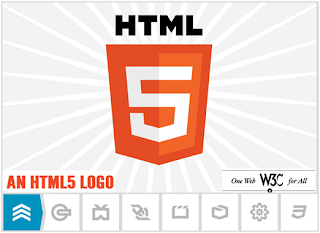
We all know that the HTML5 is new hot thing in the industry which everyone is trying to write about it, know more concepts, downside and curious about future of the web going ahead with this innovative standard – technology.Some might embrace it or some might criticize it whichever side of the debate you are on it will surely change the web development platform giving the power to do more – which we as geeks weren’t suppose to even think about it. Being W3C standards the browser vendors are now getting leaned towards supporting different features of it that included Microsoft Internet Explorer 9 too.
Things like jQuery, YAML, formatting techniques, and design trends change very quickly throughout the web community. And for the most part we’ve all accepted that some of the things we learn today can be obsolete tomorrow, but that’s the nature of our industry. But keeping aside that fear of not learning new thing we are going to know more about HTML5. If you Google it you will find tons of articles and blogs about HTML5 features and demos, mainly tags and new additions to HTML5 than older versions.
This blog is an attempt to gather HTML5 JS API information in one place instead of going through the traditional concepts only. As the HTML5 is in draft mode and it will change quickly, it is likely that some information outline below might get outdated. If that is the case, please get in touch so that I can update accordingly.
Below is the list of APIs in draft version by the time I wrote this blog. I am going to link them to specific posts in the blog that I will be writing the introduction and explaining the use case of each.
Web Workers
This specification defines an API for web developers to implement multi-threading running scripts in the background independently of any user interface scripts.
For more information http://geeksinaction.blogspot.com/2011/03/html5-webworker-api.html
Server-Sent Events
This specification defines an API for opening an HTTP connection for receiving push notifications from a server in the form of DOM events. The API is designed such that it can be extended to work with other push notification schemes such as Push SMS.
For more information http://geeksinaction.blogspot.com/2011/03/html5-server-sent-api.html
Web Notifications
Web notifications are the ability for an application to notify user even if they are not at the web page in the form of small notification popup box. This creates a great deal for the web applications where even if the interaction between the web application and user is not in synch they can have notifications reached to the end user.
For more information http://geeksinaction.blogspot.com/2011/03/html5-web-notification-api.html
Web Storage
This specification allows web application to store the data in structured and persistence manner using key-value format. The web storage can be categorized into session storage (per browser session) and local storage (persistent across multiple sessions).
For more information http://geeksinaction.blogspot.com/2011/03/introduction-this-specification-allows.html
The Messaging API
This specification defines an API that provides access to messaging functionality in the device, including SMS, MMS and email. It includes APIs to create and send messages. These APIs complement what sms:, mms:, and mailto: URI schemes provide with:
- the possibility to attach files to messages,
- A callback on success / error when a message is sent
For more information http://geeksinaction.blogspot.com/2011/06/messaging-api.html
Navigation Timing
This specification defines an interface for web applications to access timing information related to navigation and elements.
For more information http://geeksinaction.blogspot.com/2011/06/navigation-timing-api.html
This specification defines an interface for web applications to access timing information related to navigation and elements.
For more information http://geeksinaction.blogspot.com/2011/06/navigation-timing-api.html
Contacts API
HTML5 Web Messaging
File API: Writer
File API: Directories and System
File API
Web IDL
Permissions for Device API Access
The Media Capture API
HTML Media Capture
RDFa API
The Widget Interface
Geolocation API Specification
XMLHttpRequest Level 2
Indexed Database API
XMLHttpRequest
Cross-Origin Resource Sharing
API for Media Resource 1.0
The System Information API
Uniform Messaging Policy, Level One
Selectors API Level 2
Programmable HTTP Caching and Serving
The Web Sockets API
Selectors API Level 1
Web Forms 2.0
No comments:
Post a Comment